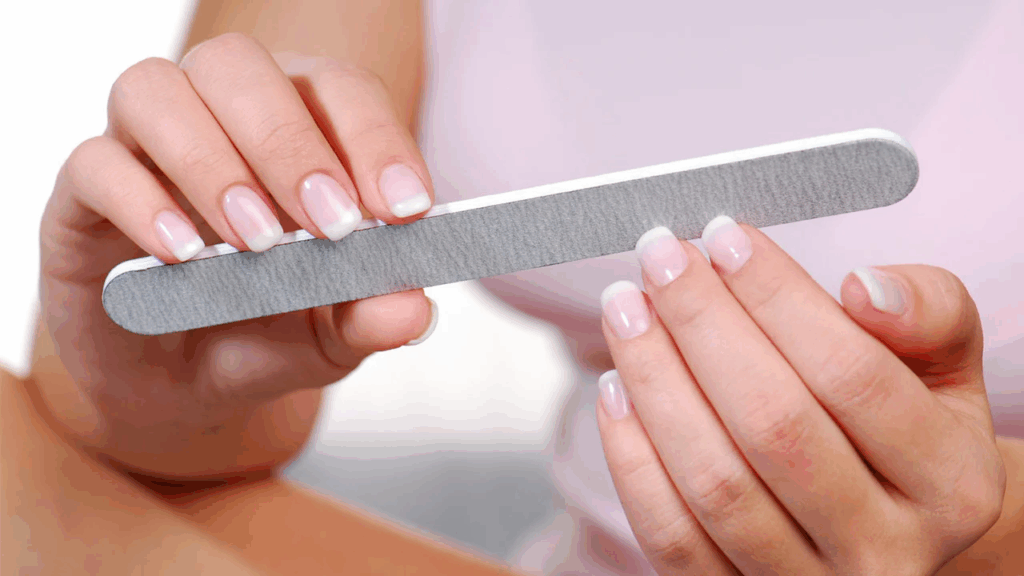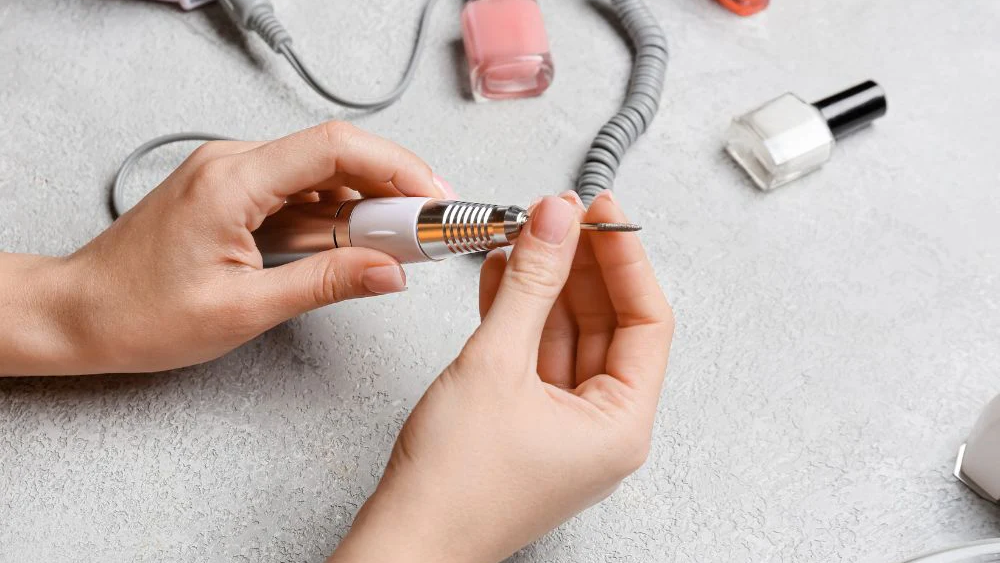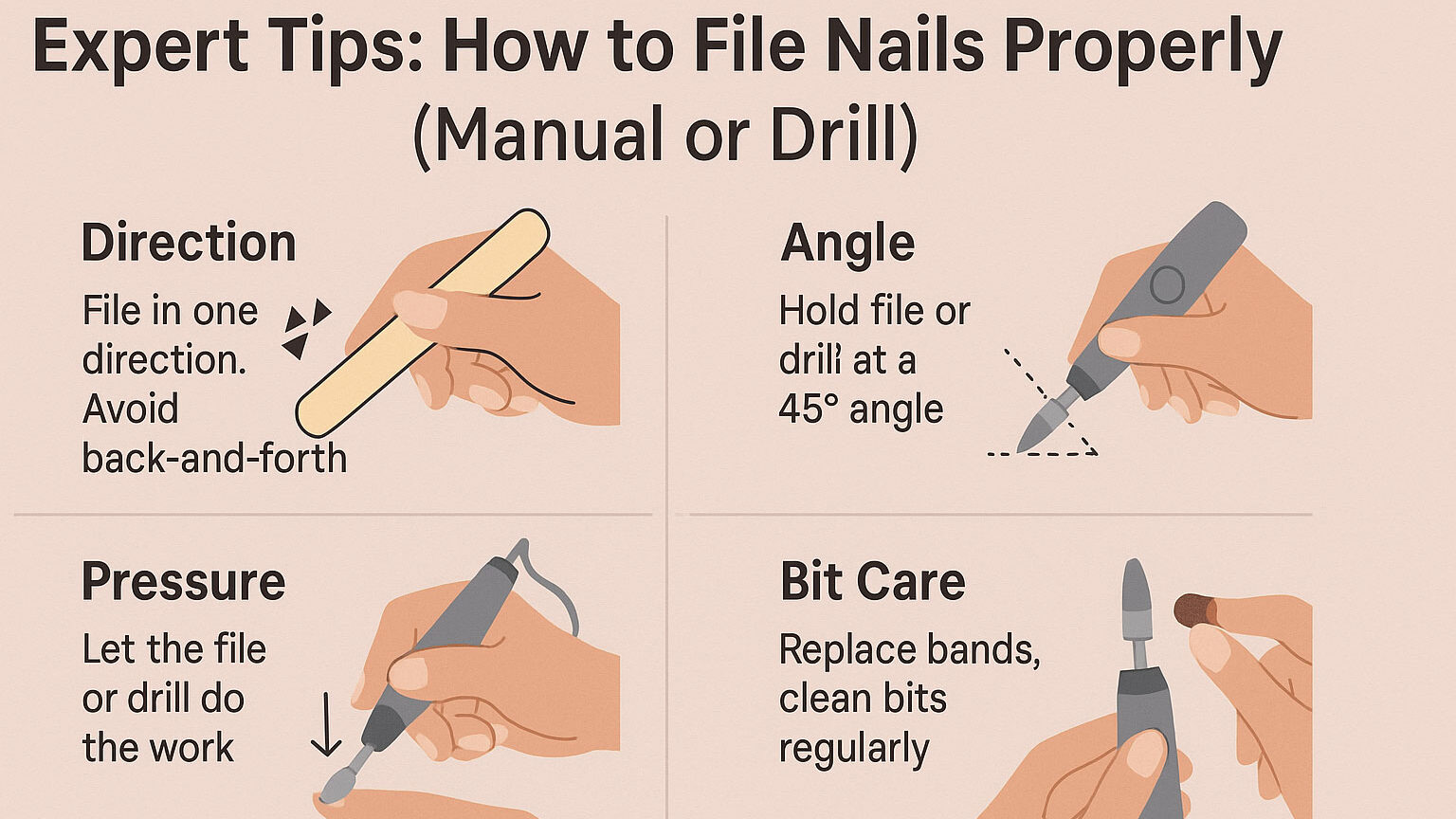Choosing the Right Nail Filing Tool in 2025
In the ever-evolving world of nail care, choosing between an electric nail drill vs nail file can feel like a big decision, especially if you’re new to doing your nails.
Maybe you’re wondering:
- Is an electric nail drill too advanced for me?
- Are manual nail files good enough for gel polish?
- Which one is safer for natural nails?
Whether you’re a beauty beginner or a budding nail tech, this guide will help you understand the differences and make the best choice for your needs.
What Is a Nail File?
A nail file is a handheld tool used to shape and smooth the edge of the nail. Simple, effective, and budget-friendly, it’s a staple in any nail kit.

Types of Nail Files:
This article will explore the electric nail drill vs nail file debate, helping you decide which tool is best for your nail care routine.
- Emery Board: Common, disposable, and gritty
- Glass/Crystal File: Gentle and reusable
- Metal File: Durable, but harsher on nails
Best For:
- Shaping natural nails
- Light touch-ups
- Travel or quick fixes
Top Best Nail Files for Manicures at Home
- Mont Bleu Premium Crystal Glass Nail File
- Revlon Compact Emery Board Set
- ORLY Black Board 100/180 Grit File
- Tweezerman Stainless Steel Nail File
- View all “8 Best Nail Files for Manicures at Home“
🟡 Limitations: Not suitable for thick overlays like acrylics or for speeding up polish removal.
What Is an Electric Nail Drill?
An electric nail drill, also called an e-file, is a motorized device that spins different bits for filing, shaping, and cleaning nails. Common in professional salons, they’re now popular with DIYers too.
Key Features:
- Adjustable RPM (speed)
- Interchangeable bits for different tasks
- Corded or cordless options

Best For:
- Gel and acrylic removal
- Cuticle work
- Surface smoothing and shaping
💡Bonus: Saves time and reduces hand fatigue, especially during long sessions.
Feature-by-Feature Comparison: Electric Nail Drill vs Nail File
| Feature | Electric Nail Drill | Manual Nail File |
|---|---|---|
| Speed | Fast, efficient with high RPM | Slower, requires more effort |
| Precision | High, especially with small bits | Moderate, depends on skill |
| Best For | Acrylics, gel, extensions | Natural nail shaping |
| Ease of Use | Learning curve for beginners | Very easy to use |
| Noise & Vibration | Moderate, may be noisy at high speed | Silent |
| Portability | Less portable unless cordless | Extremely portable |
| Cost | $30–$200 (device + bits) | $1–$15 |
| Maintenance | Bits need cleaning, machine needs care | Replace file when worn |
Pros and Cons of Each Method
| Tool | Pros | Cons |
|---|---|---|
| Electric Nail Drill | – Fast and efficient for acrylics/gel removal – Reduces hand fatigue – Multi-functional with interchangeable bits – Smooths surface and cuticles | – Learning curve for beginners – Higher initial cost – Risk of overfiling if misused – Needs regular cleaning and maintenance |
| Manual Nail File | – Easy to use and beginner-friendly – Great for natural nail shaping – Inexpensive and widely available – Quiet and travel-friendly | – Time-consuming for hard overlays – Can cause wrist fatigue – Less effective on gels/acrylics – Limited shaping precision |
Which Tool Is Best for Your Needs?
For Natural Nail Maintenance:
- ✅Best Choice: Manual nail file or a low-speed e-file with fine grit
- Why: You only need light shaping and minimal filing.
For Gel Polish Removal:
- ✅Best Choice: Electric nail drill with a medium grit bit
- Why: Manual filing takes too long and risks over-thinning the nail.
For Acrylics or Nail Extensions:
- ✅Best Choice: High-RPM electric nail drill with a coarse bit
- Why: You’ll need power and control to remove heavy overlays efficiently.
For Cuticle Work or Smoothing:
- ✅Best Choice: Electric nail drill with a cone or safety bit
- Why: Manual files don’t work for crevices or surface buffing.
Is It Safe to Switch Between the Two?
Yes! In fact, many professionals use both tools together:
- Use a manual file for detail shaping and quick touch-ups
- Use an e-file for prepping, smoothing, or removing enhancements
Switching tools helps reduce wear on your nails and gives you more control and precision.
💡 Pro Tip: Use a glass file for everyday shaping and save the electric drill for more intensive tasks like fill-ins and gel removal.
Expert Tips: How to File Nails Properly (Manual or Drill)
- Direction: Always file in one direction when using a manual file. Back-and-forth can cause splits.
- Angle: Hold the file or drill bit at a 45° angle to follow the natural curve of the nail.
- Pressure: Let the file or drill do the work. Avoid pressing too hard.
- Bit Care: Replace sanding bands regularly and clean reusable bits with alcohol or a disinfectant soak.

FAQs: Nail File vs Nail Drill
-
Which tool lasts longer?
Electric drills last for years with care, while manual files need replacing every few months.
-
Can you overfile with either method?
Yes—especially with drills. Overfiling can thin or damage the nail. Always use gentle strokes and check frequently.
-
Are electric drills safe for sensitive nails?
Yes, with proper bits and speed. Use fine grit and keep speed under 10,000 RPM for delicate nails.
-
Which is better for travel?
Manual files are best for travel. However, some cordless mini-drills (like MelodySusie) are great for travel use too.
-
Can I use both on the same manicure?
Definitely. Many pros file with a drill first, then shape or refine with a manual file for precision.
Conclusion
The bottom line? Both tools have their place in a smart nail care routine.
- Choose a manual file if you want simplicity, travel ease, or natural nail maintenance.
- Choose an electric drill if you’re working with gels, acrylics, or want salon-level results at home.
- Or do what the pros do—use both strategically for different steps.




